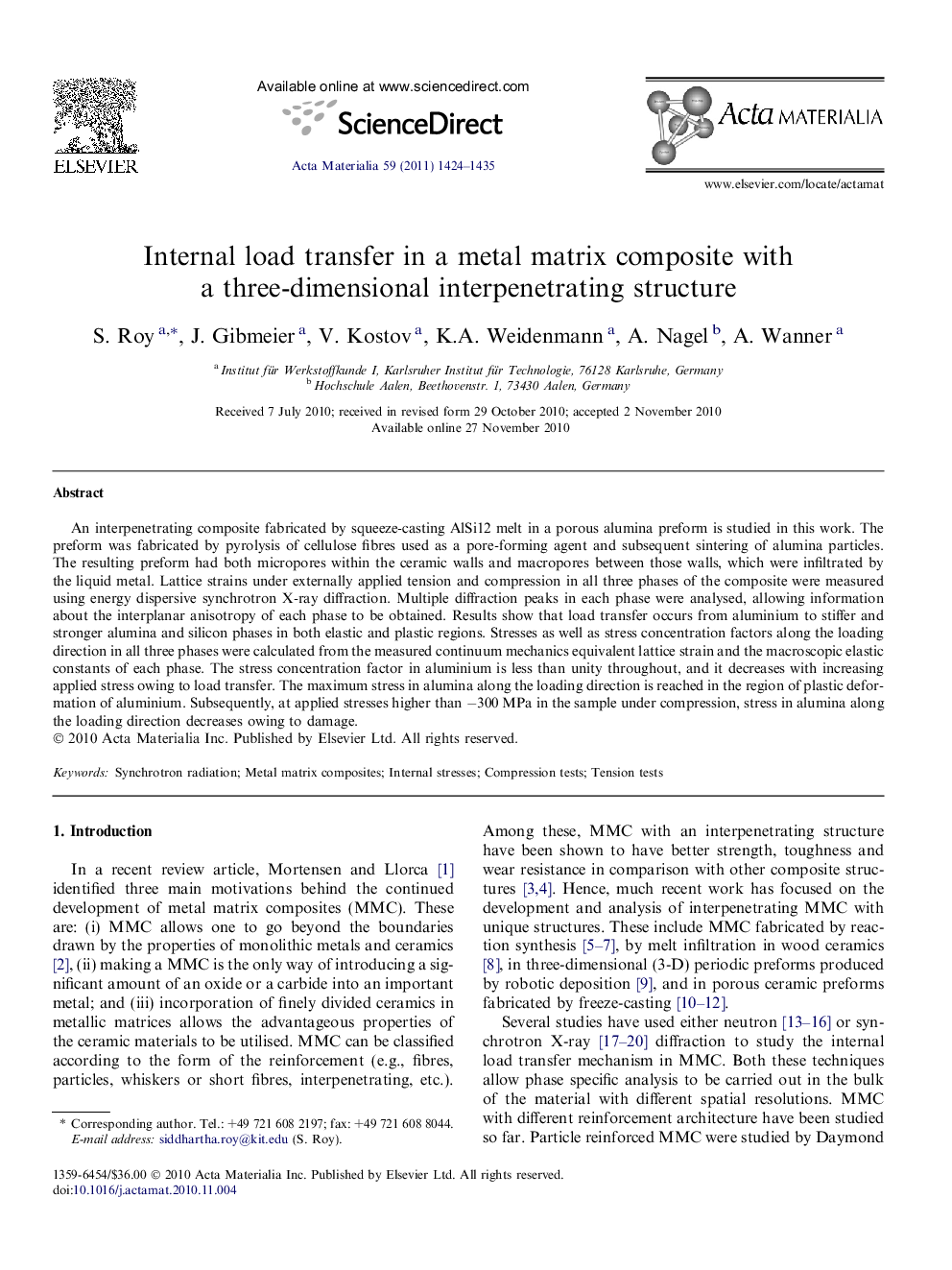| Article ID | Journal | Published Year | Pages | File Type |
|---|---|---|---|---|
| 10620597 | Acta Materialia | 2011 | 12 Pages |
Abstract
An interpenetrating composite fabricated by squeeze-casting AlSi12 melt in a porous alumina preform is studied in this work. The preform was fabricated by pyrolysis of cellulose fibres used as a pore-forming agent and subsequent sintering of alumina particles. The resulting preform had both micropores within the ceramic walls and macropores between those walls, which were infiltrated by the liquid metal. Lattice strains under externally applied tension and compression in all three phases of the composite were measured using energy dispersive synchrotron X-ray diffraction. Multiple diffraction peaks in each phase were analysed, allowing information about the interplanar anisotropy of each phase to be obtained. Results show that load transfer occurs from aluminium to stiffer and stronger alumina and silicon phases in both elastic and plastic regions. Stresses as well as stress concentration factors along the loading direction in all three phases were calculated from the measured continuum mechanics equivalent lattice strain and the macroscopic elastic constants of each phase. The stress concentration factor in aluminium is less than unity throughout, and it decreases with increasing applied stress owing to load transfer. The maximum stress in alumina along the loading direction is reached in the region of plastic deformation of aluminium. Subsequently, at applied stresses higher than â300Â MPa in the sample under compression, stress in alumina along the loading direction decreases owing to damage.
Keywords
Related Topics
Physical Sciences and Engineering
Materials Science
Ceramics and Composites
Authors
S. Roy, J. Gibmeier, V. Kostov, K.A. Weidenmann, A. Nagel, A. Wanner,
